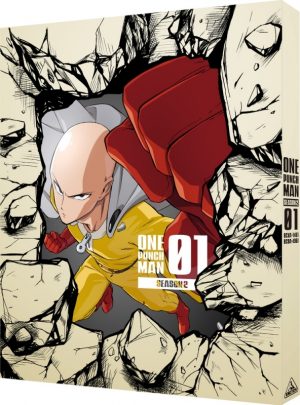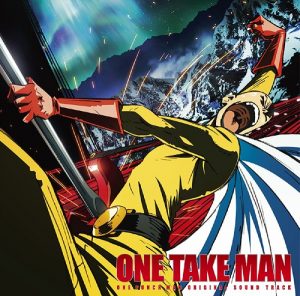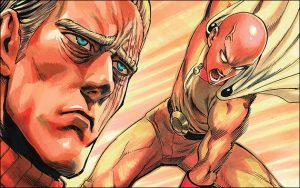A Warrior’s Journey
- Episodes : 12
- Genre : Action, Sci-Fi, Comedy, Parody Super Power, Seinen
- Airing Date : April 10, 2019 -July 3, 2019
- Producers : JC Staff
Contains Spoilers
One Punch Man 2nd Season Introduction
After nearly four years, fans have gotten their long awaited second installment to One Punch Man, based on the hit manga by ONE and Yusuke Murata. This season further expands the role of the Hero Association and its inner rankings, as well as introduce some new villains for our heroes to conquer. This time, our heroes have to face two different villains at the same time. One is Garo, a martial arts master who wants to defeat every great hero, and the other is the Monster Association, a group of monsters (yeah, it’s in the name) who are wreaking havoc on the city. While all of this is going on, Saitama enters a martial arts tournament in order to get a better understanding of the martial arts and win some money; and he plays video games with King, the greatest hero in the world.

1. It Highlights More Characters
Saitama is a character that more or less doesn’t need any more development as a hero, so this season takes advantage of the fact that the world this anime takes place in is full of heroes, and gets to show more of them. Of course, Genos—Saitama’s self-appointed disciple—gets to kick ass in a few episodes, but there are characters outside of Genos and Saitama who also get their turn in the spotlight. As we all know, Saitama can’t be everywhere at once and this anime does a great job of showing that. Plus, we get to see what other unique abilities and gimmicks the heroes and villains have, and it they’re recipes for success.
2. A Captivating Villain
Garo, who is one of the co-villains of the season, is an outstanding character in his own right. Granted he has been done before, but he adds more dimension to this super hero oriented story. He’s not motivated by world domination, but he just wants to prove he’s the very best (like no one ever was), and he does that by targeting A class and S class heroes. The more he’s highlighted, the more you see that he genuinely just wants a good fight and doesn’t want to involve civilians such as children. The fact that he goes out of his way to help a child shows that while he has bad intentions, he’s not downright evil despite being one of the main villains. By the time we get to the end of the season, we see how his views were shaped and he is sympathetic as to why he wants to fight the heroes. If anti-heroes can be a thing, then Garo is an anti-villain. Last, he’s played by one of the best voice actors of modern times, Hikaru Midorikawa.
3. Criticism of Japanese Society
If One Punch Man does a great job at anything, it is without a doubt criticizing Japanese hierarchy systems within the academic and workplace settings. This doesn’t have to apply to Japanese society, but other systems where competitive hierarchy systems exist. As seen through Saitama, who is classified as a B class hero, such systems are not a true reflection of anyone’s abilities or values to society. Saitama doesn’t really care about his place and just pursues being a hero because he wants to. He doesn’t care about the system and is willing to let others take credit for what he did. Through this series, we can learn that the hierarchy systems do nothing more than to just separate people into categories, and not as unique individuals who are equally contributing in their own distinguishing ways.
1. Too Short
For a series that’s been four years in the making, it’s only natural to feel that a 12-episode series just feels way too short. We know some people prefer this format and that’s ok. But taking into consideration the gap between then and now and how far the manga has progressed, perhaps audiences deserve something a little more. Last, it ends when things are about to pick up and no way do we want to wait for less than half a decade for more.
2. Change of Studios
In case some of you didn’t know, Studio Madhouse who did season 1 did not do season 2. Instead, JC Staff has taken over responsibility for the second season. Not to take away anything from JC Staff, but given Madhouse’s reputation for its attention to detail (especially in the original manga), it just doesn’t feel the same without them. While it may not be a big deal to some viewers, the color palette and resolution in this season doesn’t feel as deep and rich as its predecessor, and just feels a bit hollow with its coloring. The animation is still pretty good, but when taking into account the recent news of Madhouse (which is a different article for a different time), we can understand the change.
Final Thoughts
We understand some of the chapters from the manga were rushed in the episodes of this season, but hopefully we can get our third season in less than four years. Granted Saitama as a character is already over-powered, he is genuinely a guy who is still trying to learn. Even though he’s capable of winning a tournament with no issues, he still does it so he can get an understanding of a martial arts mentality. Though Saitama doesn’t need much development, he’s used as a great tool to develop the people he interacts with, and that we feel is the heart of the series that this anime masterfully manages to convey.
Recommended Post



